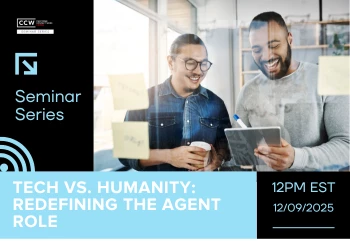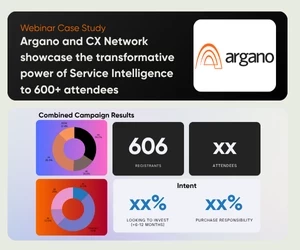How to meet changing demands of modern customers
CX Network catches up with John Lewis, senior manager of consumer insights at US Cellular, who offers advice on the key personalization challenges currently facing CX operatives
Add bookmark
Personalization
Drawing on more than a decade of CX experience, John Lewis, senior manager of consumer insights at telecoms firm US Cellular offers advice on how CX professionals can empower the workforce to deliver experiences that meet customers’ changing demands.
Customers expect personalization
Discussing the behavior and expectations of the average customer, Lewis believes there is an increasing desire for highly personalized services and the feeling of real human interaction. Customers are beginning to compare all brand experiences with the highest level offerings, regardless of whether these come from the same industry or even a similar service.
“Customers no longer think about the best experience by channel,” Lewis explains. “The best experience is the best experience, no matter what.”
Lewis believes this desire is only going to become more acute in the coming years as customers become more aware of what services and initiatives are being offered by the most successful CX programs.
“I think everybody is realizing that we’re all being compared against Starbucks, Google and Apple Store. Whatever the best is, that is what our customers want,” begins Lewis. “There is a real desire and need for personalization.”
The reality is not many customers receive personalized experiences
Despite the current demand for personalized services, this is not always what customers are experiencing, Lewis remarks, with the truth being that “a lot of companies claim they’re customer centric, but when you look a little deeper, they aren’t”.
When workforces are not adequately educated on the importance of customer care and equipped to deliver, the quality of experiences for customers can fluctuate from touch point to touch point, depending on the particular skillset or mood of the staff member they encounter.
Selecting the best CX initiative
To generate a customer-centric culture that is capable of offering the personalized services customers are looking for, it is important to prioritize CX initiatives with the largest forecasted returns. Lewis believes that is the key to attracting the attention of an organization's leaders.
“In the end, the biggest return is going to be the one that the organization buys into the most,” he advises. Participation from stakeholders can be achieved by involving the appropriate business leaders in delivering the initiative, taking a consultative approach and regularly seeking their thoughts on the progress and impact of a CX project.
Once you have the leaders in an organization working with you, you can ensure that the project will excel, Lewis explains. If those leaders are not involved, the program may make some incremental gains, but it will never be as successful as when the end-to-end business is involved in the process - “So, when I work, I work with the entire organization”, says Lewis.
“It’s vital that everybody understands how they can impact the customer experience, because not every group, especially operations groups, initially realize that they have an impact.”
Tracking success
Lewis believes that the lack of personalization experienced by customers can stem from a number of sources, key among them being a tendency for businesses to become obsessive over certain numerical metrics like NPS. Organizations should instead build on their base scores, bringing in as many customer voices through as many channels as possible to generate a clear picture of what customers’ key concerns are.
Read also: Customer experience metrics checklist
“That’s how I go about it,” he confirms. “The tracker is the base and everything else builds off it. And that’s where successful customer service comes from.”
Expanding on this, Lewis details the importance of elevating the customer’s voice past just a score or metric. He adds, “It is about approaching it holistically so you deploy all the different ways that we can listen, and then let your team have access to the findings. This will bring in the thousands of different customer voices that make it almost impossible not to hear their perspectives.”
He clarifies, “frontline may respond to video, whereas executives could want to see a number tied to a specific response.”
Lewis adds that it is important to encourage business leaders to focus on how they can actually generate the best experience for their customers, regardless of metrics or scores.
“It’s about doing what’s right for the customer, irrespective of whether you’re going to see your score tick up a little bit,” he adds.
Read also: Rules for self service in customer experience
The road ahead
The nature of CX initiatives will develop positively in the coming years, predicts Lewis, as operatives seek to emulate the best, most personalized customer experiences.
“We’re going to have to personalize experiences like never before,” says Lewis. “Which is going to require us to understand how customers want to be communicated with and interacted with.”
To read more in-depth interviews with leading CX professionals like John Lewis on the topic of personalization, view the latest CX Network Interviews.
































